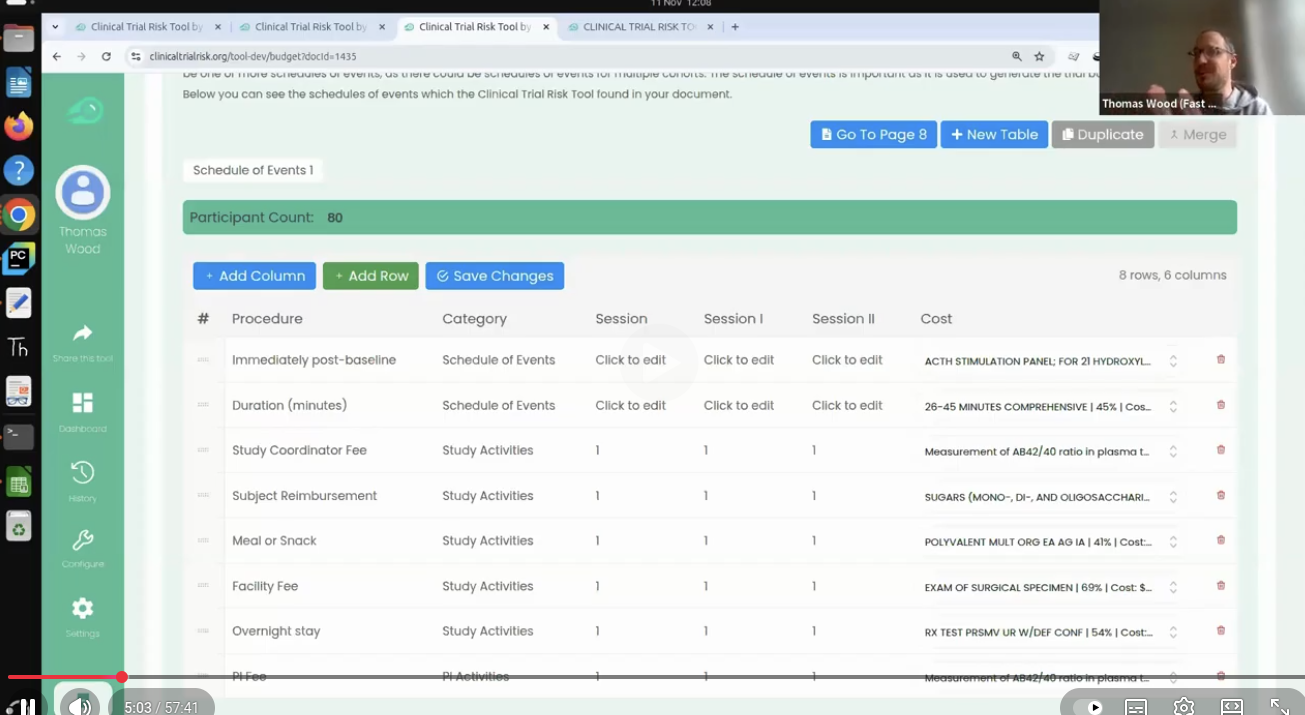
This post originally appeared on Fast Data Science’s blog on LinkedIn.
A well-constructed study plan is the backbone of any clinical research project. It guides the research process and ensures that the study is feasible, ethical, and capable of generating valid results. Here’s a step-by-step guide to developing an effective study plan.
The core of your study plan is the research question. It must be specific and significant and address an unresolved issue. For example, “Can we diminish loneliness among the elderly by providing a structured in-home support program?” This question is precise and has direct implications for improving patient care.
Could you conduct a thorough literature review to understand what is already known?
Define the significance of the research question and its potential impact on clinical practice or public health.
2. Study Design:
Choose between observational and clinical trials based on the research question and available resources.
Consider various designs, such as cross-sectional, cohort, or case-control studies for observational research and randomised controlled intervention trials.
3. Participants:
Define explicit inclusion and exclusion criteria to ensure a representative sample.
Estimate the required sample size early to avoid feasibility issues later.
4. Variables:
Clearly define predictor, confounding, and outcome variables.
Ensure these variables are measurable and relevant to the research question.
5. Statistical Issues:
Formulate hypotheses and determine the appropriate statistical methods.
Plan for data analysis to ensure the results are valid and reliable.
Expertise in your study area is crucial. Keep abreast of recent advances and engage with the scientific community through:
Systematic literature reviews.
Participation in scientific meetings and conferences.
Building relationships with other experts in the field.
Ethical standards are paramount in clinical research. Ensure your study:
Obtains informed consent from participants.
Maintains participant confidentiality.
Receives approval from relevant ethical committees.
Throughout the study, remain open to new ideas and improvements:
Attend conferences and engage in informal discussions with peers.
Be receptive to feedback and willing to refine your study plan as necessary.
Developing a robust study plan involves meticulous preparation and continuous learning. By focusing on a well-defined research question and adhering to ethical standards, you can ensure that your clinical research will be feasible, impactful, and valuable to the scientific community.
Optimise your clinical trials with our AI-powered Clinical Trial Risk Tool.
Get precise cost and risk estimates from clinical documents to enhance your decision-making process. Try the Clinical Trial Risk Tool now!
#ClinicalResearch #StudyDesign #MedicalScience #ResearchEthics
Source:
Browner, Warren, S. et al. Designing Clinical Research. Available from: Wolters Kluwer, (5th Edition). Wolters Kluwer Health, 2022.
Browner, Warren, S. et al. Designing Clinical Research. Available from: Wolters Kluwer, (5th Edition). Wolters Kluwer Health, 2022.

Thomas Wood presents the Clinical Trial Risk Tool at the Clinical AI Interest Group at Alan Turing Institute The Clinical AI Interest group is a community of health professionals from a broad range of backgrounds with an interest in Clinical AI, organised by the Alan Turing Institute. In the group’s November 2025 meeting, the talk was given by Dr Jeff Hogg, Programme Director, MSc AI Implementation (Healthcare), University of Birmingham and Clinical Innovation Officer in AI, University Hospitals Birmingham NHSFT, titled AI Readiness for Health and Care Provider Organisations.

Guest post by Safeer Khan, Lecturer at Department of Pharmaceutical Sciences, Government College University, Lahore, Pakistan Multi-Arm & Multi-Stage (MAMS) Clinical Trials Design Tips The design of clinical trials is increasingly challenged by the Rising Costs, limited availability of eligible patient populations, and the growing demand for timely therapeutic evaluation. Traditional parallel-group designs, which typically compare a single intervention to a control, are often insufficient to meet these pressures in terms of speed, efficiency, and resource utilization.

You can use the t-test when you want to compare the means (averages) of continuous data between two groups, such as blood pressure or maximum concentration of a drug in urine (Cmax). If you have data with a dichotomous outcome, you can use the Chi-Squared test instead - please try our Chi-Squared sample size calculator. The calculator below will calculate the minimum sample size for you. Your expected effect size d is the standardised effect size according to Cohen’s definition.